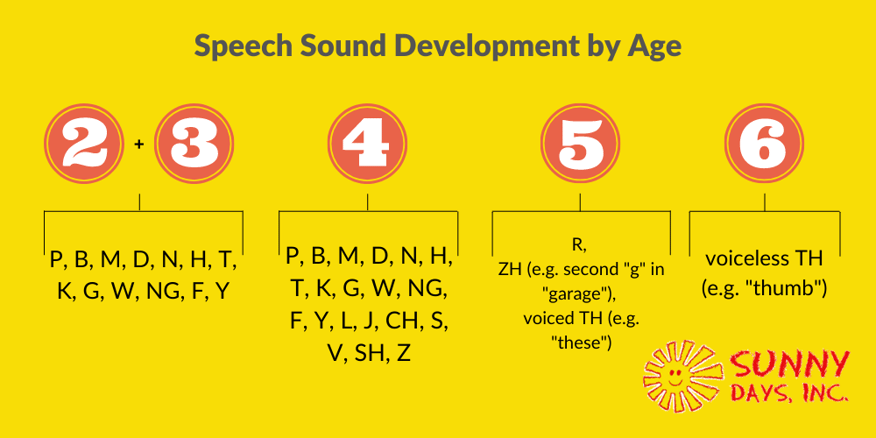- SERVICES
- SUNNY DAYS EARLY CHILDHOOD SERVICES
- OUR THERAPISTS
- SUNNY DAYS EARLY INTERVENTION SERVICES
- SUNNY DAYS BEHAVIORAL / OCCUPATIONAL / PHYSICAL / SPEECH THERAPY SERVICES
- SUNNY DAYS AUTISM SERVICES
- SUNNY DAYS EVALUATIONS & ASSESSMENTS
- SUNNY DAYS BEHAVIOR ASSESSMENTS
- INDEPENDENT INITIAL ELIGIBILITY EVALUATIONS
- FAMILY-CENTERED PLAY BASED EVALUATIONS
- EQUIPMENT & ASSISTIVE TECH REC'S
- HOW TO GET SERVICES
- STATE REQUIREMENTS FOR SERVICES
- VIRTUAL INTERVENTION
- SUNSHINE CENTER
- FAMILY RESOURCES
- TRAINING & WORKSHOPS
- JOIN OUR TEAM
- Blog
- Home
- About
- RESOURCES
- SERVICES
- SUNNY DAYS EARLY CHILDHOOD SERVICES
- OUR THERAPISTS
- SUNNY DAYS EARLY INTERVENTION SERVICES
- SUNNY DAYS BEHAVIORAL / OCCUPATIONAL / PHYSICAL / SPEECH THERAPY SERVICES
- SUNNY DAYS AUTISM SERVICES
- SUNNY DAYS EVALUATIONS & ASSESSMENTS
- SUNNY DAYS BEHAVIOR ASSESSMENTS
- INDEPENDENT INITIAL ELIGIBILITY EVALUATIONS
- FAMILY-CENTERED PLAY BASED EVALUATIONS
- EQUIPMENT & ASSISTIVE TECH RECS
- HOW TO GET SERVICES
- STATE REQUIREMENTS FOR SERVICES
- VIRTUAL INTERVENTION
- SUNSHINE CENTER
- FAMILY RESOURCES
- TRAINING & WORKSHOPS
- JOIN OUR TEAM
- Blog
- News
- Contact Us
Sunny Days Blog
Speech Sounds By Age: What Sounds Should My Child Be Able to Pronounce?

Do you have a child whose speech is unclear? Is it hard for you to understand what they’re saying? To some degree, this is normal for very young children (infants and toddlers, specifically), but in other instances it can be a cause for concern and warrant speech therapy. In this blog post, we present the current guidelines for speech sound development so that you can monitor your child’s skills at home. We also review the details of consonant articulation for each age group.
Please note: These guidelines are based on monolingual, English-speaking children. If your child who speaks more than one language or whose primary language is not English, these guidelines may not apply to your family.
Speech Sound Development By Age
In brief, children should be able to pronounce a selection of new sounds in each year of early childhood:
Speech Sounds: Age 2
Two-year-olds should be able to pronounce the consonants P, B, M, N, H, W, D. These sounds can be acquired any time before age 3.
Speech Sounds: Age 3
A few additional sounds are typical in speech development for three-year-olds: T, K, G, F, NG (as in "wing"), and Y (as in yellow).
In total, children should be able to pronounce the following 13 consonant sounds before age four:
P, B, M, D, N, H, T, K, G, W, NG, F, Y
Common Pronunciation Errors for Two- and Three-Year-Olds:
As your children learn new sounds and words, you can expect to hear errors in their speech. Here are some common pronunciation mistakes for two- and three-year-olds:
"B" sounds instead of "P," e.g. "pat" instead of "bat"
"T" sounds instead of "D" and "C" sounds. e.g. "tog" instead of "dog," "tat" instead of "cat"
"D" sounds instead of "G," e.g. "dot" instead of "got"
"P" sounds instead of "F," e.g. "pour" instead of "for"
Consonant Articulation for 2- and 3-Year-Olds
For children between ages two and three, speech is commonly unclear as they are still learning how to communicate like an adult. Typically, we expect a two-year-old’s speech to be understood approximately 50% of the time and a three-year-old’s speech to be understood between 50-75% of the time.
In addition to how well your child should be understood, it’s important to consider what they should be able to say.
On average, children between ages two and three are able to correctly pronounce 13 different consonant sounds.
Speech Sounds: Age 4
New sounds for four-year-olds include: L, SH, CH, S, Z, J , and "DG" (as in "nudge")
In total, four-year-olds should be able to pronounce the following consonant sounds before their fifth birthday:
P, B, M, D, N, H, T, K, G, W, NG, F, Y, L, J, CH, S, V, SH, Z, DG
Common Pronunciation Errors for Four-Year-Olds:
Swapping "L" and "Y" sounds interchangeably
"T" sounds instead of "S," "SH," and "CH" sounds; e.g. "toe" instead of "so," "too" instead of "shoe," and "teese" instead of "cheese"
"D" sounds instead of "J" and "Z" sounds; e.g. "dar" instead of "jar" and "doo" instead of "zoo"
Consonants and Sound Development in 4-Year-Olds
Like two- and three-year-olds, four-year-olds may still have speech that is unclear or mispronounced. However, we typically expect a four-year-old child’s speech to be understood almost all the time. It’s important to consider not just how well you understand your child but also how well less familiar listeners (friends, distant relatives) understand them. As parents, we often understand what our children are saying—even when others may not—because we are accustomed to the patterns they’ve developed.
Aside from your child’s overall speech clarity, you need to think about what sounds they should be able to say at this age. In addition to the sounds described in the two- and three-year-old range above, a four-year-old child is typically able to pronounce an additional seven consonant sounds.
Speech Sounds: Ages 5 to 6
New consonant sounds for five-year-olds should include: R, ZH (e.g. the second “g” in garage), voiced TH (e.g. the)
A commonly asked question is: "At what age should a child be able to say the 'R' sound?" Kids should be able to pronounce the letter "R" before their 6th birthday.
Speech Development in 5- and 6-Year-Olds
At age five, children should be understood 100% of the time. Additionally, mispronunciations become less and less common. When children are five, they are expected to say an additional three consonant sounds correctly. These sounds are: R, ZH (e.g. the second “g” in garage), voiced TH (e.g. these).
At age six, children have one sound left to master, which is the voiceless TH (e.g., thumb).
Speech Sounds: Ages 6 to 7
By age seven, children should be able to pronounce the voiceless "TH" sound, as in the word "thumb."
Pronunciation Errors for Five- to Seven-Year-Olds:
The most common pronunciation error for five-year-olds is using a "W" sound instead of an "R" sound. For example, saying "wan" instead of "ran."
Additionally, children may use "V" sounds instead of voiced "TH," such as: "muver" instead of "mother."
"B" sounds may be used instead of "V," e.g. "boice" instead of "voice."
Voiceless "TH" may be replaced with "F" sounds; e.g. "fink" instead of "think."
What Do I Do if My Child's Speech Development is Delayed?
If your child’s speech sound development does not align with the aforementioned guidelines, a speech evaluation should be completed by a licensed speech-language pathologist (SLP). Through the evaluation, the SLP will be able to determine whether or not your child’s speech is developing appropriately and if speech therapy is warranted. Additionally, the SLP can help to determine what underlying cause may be impacting your child’s speech and offer suggestions for home practice.
References:
McLeod, S. & Crowe, K. (2018). Children’s consonant acquisition in 27 languages: A cross-linguistic review. American Journal of Speech-Language Pathology. doi:10.1044/2018_AJSLP-17-0100
Photo by Volodymyr Hryshchenko on Unsplash
Courtney Caruso, M.S., CCC-SLP
Courtney Caruso, M.S., CCC-SLP is a bilingual (English/Spanish) speech-language pathologist and the owner and founder of Liberty Speech Associates LLC, a speech therapy practice located in Hackettstown, NJ. She is also the co-author of the book From Meals to Milestones: 35 Delicious Dishes to Encourage Child Development. For more information about Courtney, visit her website at www.libertyspeechassociates.com.


